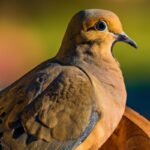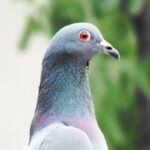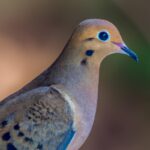Key Takeaways:
- White-winged doves are not native to Colorado, but their population has been steadily increasing in recent years.
- Hunting white-winged doves in Colorado requires a special permit, and the season is limited to certain dates and bag limits.
- White-winged doves prefer open woodlands and agricultural areas, making these habitats prime locations for hunting.
- Successful hunting of white-winged doves in Colorado requires careful scouting and knowledge of their feeding and roosting habits.
Are you ready for an exhilarating hunting experience in the beautiful state of Colorado?
Let me introduce you to the thrilling world of hunting white-winged dove.
In this article, I will share with you everything you need to know about these elusive birds, from their appearance and habits to their distribution and feeding patterns.
We will also explore the hunting regulations and seasons in Colorado, as well as provide you with valuable tips and techniques for a successful hunt.
So grab your gear and join me as we embark on an unforgettable white-winged dove hunting adventure.
Aspect | White-winged Dove Hunting |
|---|---|
Location | Colorado |
Season | September 1 – September 30 |
License Required | Small Game License + Harvest Information Program (HIP) Certification |
Bag Limit | 15 Doves per day, 45 in possession |
Shooting Hours | 1/2 hour before sunrise to sunset |
Methods | Shotguns only, no larger than 10 gauge, with steel or other approved nontoxic shot |
Special Regulations | None |
Notes | Be sure to wear proper camouflage clothing and follow all safety regulations |
White-winged Dove: Overview and Habits
Appearance and Identification
The White-winged Dove has a distinct appearance and is easily identifiable. It is a medium-sized bird, measuring approximately 11-12 inches in length.
The dove has a plump body with a long, pointed tail.
It has light gray-brown feathers on its head, neck, and upper body, while its underparts are pale gray. The most prominent feature, as the name suggests, is its white-winged patches, which are visible when it flies.
White-winged Doves also have bright red eyes and a short, thick bill.
These characteristics make them easy to recognize in the field.

Habitat and Distribution
The White-winged Dove is primarily found in the southwestern United States and northern Mexico.
They inhabit a range of diverse habitats, including desert scrub, agricultural fields, and urban areas.
These doves are commonly seen in open woodlands and near water sources.
Their distribution also extends along the Gulf Coast of Texas and parts of Florida.
It’s important to note that while they are not native to Colorado, occasional sightings have been reported in the state, particularly during migration periods.
Behavior and Feeding Patterns
White-winged doves are known for their unique behavior and feeding patterns. They are primarily arboreal, spending most of their time in trees.
They are social birds and often seen in small flocks, especially during the breeding season.
When it comes to feeding, these doves are primarily frugivorous, meaning they primarily consume fruits. However, they also feed on seeds, grains, and insects.
Their ability to eat a variety of food sources allows them to adapt to different environments.
Their feeding patterns play a crucial role in their survival and reproductive success.
Hunting Regulations and Seasons in Colorado
Licensing and Permit Requirements
To hunt white-winged dove in Colorado, you must have the appropriate license and permit.
For residents, this means obtaining a Small Game Hunting License, which can be purchased online or at authorized vendors.
Non-residents must have a Non-Resident Small Game Hunting License.
Additionally, a valid Harvest Information Program (HIP) certification is required.
It’s important to check the Colorado Parks and Wildlife website for the most up-to-date information and to ensure compliance with all licensing and permit requirements.
Hunting Season Dates
Hunting season dates in Colorado vary depending on the specific game you are targeting.
Here are the general hunting seasons for popular game animals in the state:
- Deer: Archery season usually begins in late August and runs through September, while rifle seasons typically start in October and November.
- Elk: Archery season for elk also begins in late August and runs through September, followed by rifle seasons in October and November.
- Turkey: Both fall and spring seasons are available for turkey hunting, with specific dates varying each year.
- Upland Birds: The season for upland birds, such as pheasant and grouse, usually runs from September to late November.
- Waterfowl: The waterfowl hunting season starts in October and continues through January, with specific dates for ducks and geese outlined by the Colorado Parks and Wildlife.
It’s important to note that hunting season dates can change each year, so it’s essential to check the current regulations and consult the Colorado Parks and Wildlife website for the most up-to-date information on specific hunting seasons and dates.
Remember to obtain the required licenses and permits, and always prioritize safety and responsible hunting practices.
Bag Limits and Other Restrictions
Bag Limits and Other Restrictions for hunting white-winged dove in Colorado are important to ensure sustainable management of the species and conservation of their populations. In Colorado, the bag limit for white-winged dove is 15 birds per day, with a possession limit of 30 birds.
It is crucial to adhere to these bag limits to prevent overharvesting and maintain healthy dove populations.
Additionally, there may be specific hunting seasons, areas, and methods that hunters must follow, so it’s important to be aware of any other restrictions set by the Colorado Parks and Wildlife Department. Your compliance with these bag limits and restrictions is vital to support the long-term conservation of white-winged doves in Colorado.
Preparing for White-winged Dove Hunt in Colorado
Choosing the Right Gear and Equipment
Choosing the right gear and equipment is essential for a successful white-winged dove hunt in Colorado. Here are some key items you’ll need:
- Shotgun: Opt for a 12 or 20 gauge shotgun with a modified or improved cylinder choke for better accuracy and range.
- Ammunition: Use appropriate ammunition such as 7 1/2 or 8 shot for dove hunting. Check local regulations for any specific restrictions.
- Camouflage: Wear camo clothing and accessories to blend in with the environment and increase your chances of getting closer to the doves.
- Decoys: Consider using dove decoys to attract passing doves and create a more realistic hunting setup.
- Field Bag: Carry a comfortable and practical field bag to store extra ammunition, water, snacks, and other essentials.
Remember to check local hunting regulations and make sure you have the necessary licenses and permits. Safety is crucial, so always wear appropriate eye and ear protection while hunting.
Scout the Area and Identify Potential Locations
To scout the area and identify potential locations for your white-winged dove hunt in Colorado, start by researching local regulations and hunting seasons.
Next, study maps and aerial imagery to find areas with suitable habitat, such as agricultural fields or water sources.
Look for signs of dove activity, such as droppings or feathers.
Consider reaching out to local hunters or wildlife agencies for tips on productive locations.
It’s important to be thorough in your scouting to increase your chances of a successful hunt.
Happy hunting!
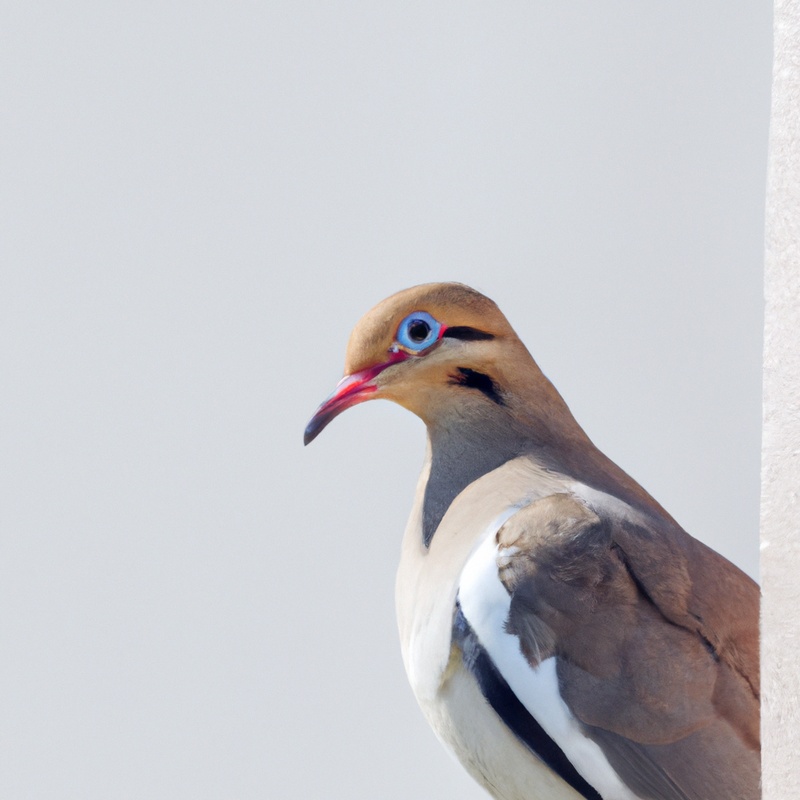
Planning for Transportation and Accommodation
When planning for your white-winged dove hunt in Colorado, it’s important to consider transportation and accommodation. For transportation, you’ll want to think about how you’ll get to your hunting location.
If you’re driving, make sure your vehicle is in good condition and plan your route in advance.
If you’re flying, look into nearby airports and arrange for a rental car or transportation to your lodging. As for accommodation, do some research and book lodging that is conveniently located near your hunting area.
Look for options that provide amenities like comfortable beds, hot showers, and a place to store your hunting gear.
Additionally, consider any dietary restrictions or preferences you may have and find accommodations that can accommodate those needs.
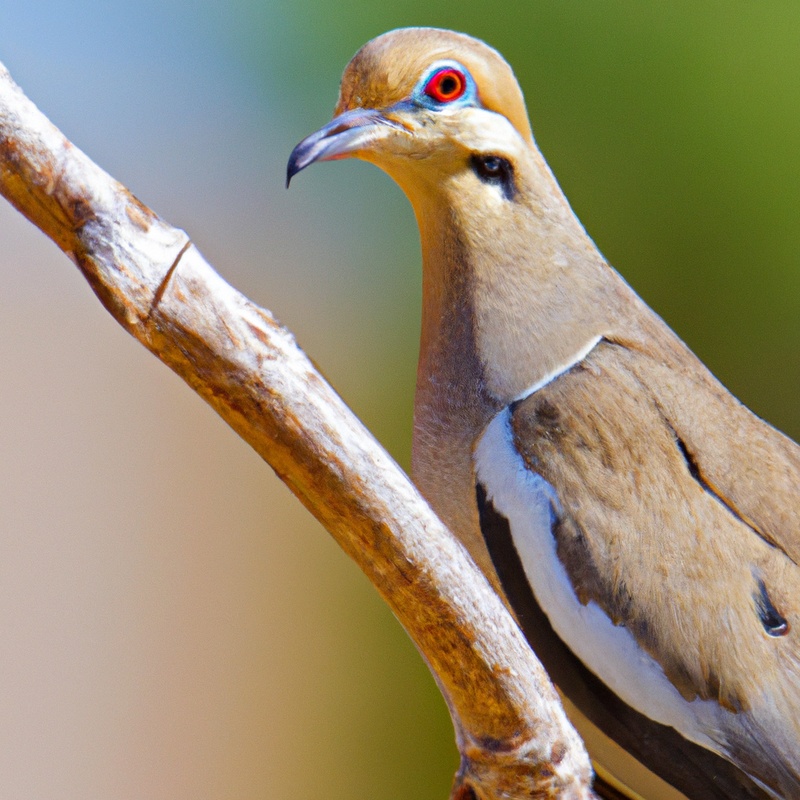
Techniques and Tips for Hunting White-winged Dove
Decoying and Calling Strategies
Decoying and calling strategies are key elements in successful white-winged dove hunting. To attract these birds, use a combination of decoys, such as ones that mimic doves in flight or resting positions.
Place them strategically to create a realistic scene.
Additionally, learn the right calls to use to entice white-winged doves. Mimicking their vocalizations can help draw them closer.
Remember to practice your calling skills to sound natural.
By mastering these strategies, you can greatly increase your chances of a successful hunt.
Camouflage and Concealment Techniques
Camouflage and Concealment Techniques play a crucial role in successful dove hunting. Here are some tips to help you blend in with your surroundings:
- Wear appropriate camouflage clothing that matches the vegetation in your hunting area.
- Use face paint or a camouflage mask to prevent any exposed skin from giving away your presence.
- Set up your hunting blind or tree stand in a secluded and well-hidden location.
- Avoid making sudden movements and stay still when doves are nearby.
- Break up your outline by using natural cover such as branches or bushes.
Remember, the goal is to make yourself invisible to the doves and increase your chances of a successful hunt. Happy hunting!
Shot Placement and Hunting Safety
Shot placement is essential for a successful and ethical hunt.
Aim for vital organs like the heart and lungs to ensure a quick and humane kill.
Practice your marksmanship skills to improve accuracy.
When it comes to hunting safety, always prioritize it.
Treat every firearm as if it is loaded, and keep the muzzle pointed in a safe direction.
Wear the appropriate orange clothing to make yourself visible to other hunters.
Additionally, make sure to familiarize yourself with the hunting regulations in your area and follow them strictly.
Hunt with a partner if possible and let others know where you’ll be hunting.
Be aware of your surroundings at all times and practice safe firearm handling.
Stay safe and happy hunting!
Field Dressing and Processing White-winged Dove
Cleaning and Butchering Techniques
Cleaning and butchering techniques for white-winged dove are simple and straightforward.
Start by removing the feathers by plucking or skinning the bird.
Remove the head and feet, then make a small incision to remove the entrails.
Rinse the bird thoroughly and pat dry.
For butchering, you can remove the breasts by cutting along the breastbone, or you can remove the entire breastplate for a boneless cut.
You can also separate the legs and thighs.
It’s important to keep your tools and work surface clean to ensure the safety and quality of the meat.
Happy hunting!
Delicious Recipes and Cooking Ideas
I love cooking and experimenting with different recipes, so here are some delicious ideas for cooking white-winged dove:
- Grilled Dove Breasts: Marinate the dove breasts in your favorite seasoning, then grill them until they are cooked to your desired level of doneness. This method brings out the natural flavors of the meat and gives it a smoky and juicy taste.
- Dove Tacos: Shred the cooked dove meat and season it with Tex-Mex spices. Serve it in tortillas with your favorite toppings like salsa, cheese, and avocado for a tasty and unique twist on traditional tacos.
- Dove Stir-Fry: Slice the dove breasts into thin strips and stir-fry them with vegetables like bell peppers, onions, and snap peas. Add some soy sauce and garlic for a flavorful Asian-inspired dish.
- Dove Pasta: Cook the dove breasts in a tomato sauce, then serve the tender meat over pasta. You can also add some fresh herbs and Parmesan cheese to elevate the flavors.
- Dove Sliders: Make mini burgers with ground dove meat mixed with breadcrumbs, onions, and spices. Serve them on slider buns with your favorite condiments and enjoy these bite-sized delights.
Remember to always thoroughly cook the dove meat to ensure it is safe to eat and be creative with your seasonings and flavor combinations. Happy cooking!
Frequently Asked Questions about Hunting White-winged Dove in Colorado
Can non-residents hunt white-winged dove in Colorado?
Yes, non-residents can hunt white-winged dove in Colorado. Colorado allows both residents and non-residents to hunt these birds during the designated season.
However, it’s important to check the specific regulations and requirements for hunting white-winged dove in Colorado before heading out.
You may need to obtain a small game license and comply with bag limits and other regulations. Remember to follow all hunting laws and have the necessary permits to ensure a legal and enjoyable hunting experience.
What is the best time of day to hunt white-winged dove?
The best time of day to hunt white-winged dove is during the early morning or late afternoon. These birds are most active during these times, making it easier to locate and target them.
During midday, the heat can drive them to seek shade and rest, reducing the chances of a successful hunt.
Therefore, planning your hunting outings around these peak activity hours will increase your chances of a successful hunt.
Are there any specific regulations for hunting white-winged dove on public lands in Colorado?
Yes, there are specific regulations for hunting white-winged dove on public lands in Colorado.
Here are some key points to keep in mind:
- Hunting seasons: White-winged dove can only be hunted during specific seasons designated by the Colorado Parks and Wildlife (CPW. It is important to check the current hunting regulations to know when the season is open.
- Licenses and permits: Hunters are required to possess a valid small game license and a Harvest Information Program (HIP certification. These can be obtained through the CPW website or authorized license agents.
- Bag limits: There are specific bag limits for white-winged dove hunting in Colorado. As of 2021, the daily bag limit is 15 doves, with a possession limit of 30 doves.
- Shooting hours: White-winged dove hunting is allowed only during legal shooting hours, which are specified by the CPW. It is essential to know the exact times to ensure compliance with the regulations.
- Use of non-toxic shot: When hunting white-winged dove on public lands in Colorado, it is mandatory to use non-toxic shot. Lead shot is prohibited to prevent harm to wildlife and the environment.
Remember to always check the current hunting regulations provided by the Colorado Parks and Wildlife to stay informed about any changes or additional requirements.
Happy hunting!
Final Verdict
Hunting white-winged dove in Colorado offers a thrilling and rewarding experience for hunters.
From learning about their appearance and behavior to understanding the regulations and seasons, being well-prepared is crucial.
By choosing the right gear, scouting potential locations, and practicing effective techniques, hunters can increase their chances of success in the field.
Additionally, proper field dressing and processing techniques ensure that the harvested dove is handled and stored correctly.
Overall, hunting white-winged dove in Colorado requires knowledge, skill, and respect for the regulations, but the experience is truly one-of-a-kind.


